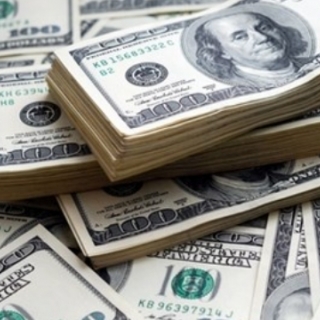


The US dollar (USD) started the week weaker, weakening against other major currencies in trading on Monday (July 22). Investors reacted to renewed trade tensions ahead of the August 1 deadline and generally cautious market sentiment.
Although US economic data has been largely solid of late, the greenback is feeling pressure from continued uncertainty surrounding the Trump administration's escalating tariff threats and growing political pressure on the Federal Reserve (Fed) to cut interest rates.
Concerns over the Fed's independence intensified after Representative Anna Paulina Luna (R-Fla.) formally filed a criminal complaint against Chairman Jerome Powell with the Department of Justice (DOJ), accusing him of two specific instances of lying under oath during his testimony before Congress about the $2.5 billion renovation of the Federal Reserve headquarters.
While the legal consequences remain uncertain, the political pressure has fueled investor concerns and added further uncertainty to already fragile market sentiment. The timing is particularly sensitive, as markets continue to grapple with mixed signals from Fed officials regarding a potential interest rate cut in July and lingering doubts about the central bank's ability to operate free from political interference.
Speaking on CNBC on Monday, Treasury Secretary Scott Bessent sharply criticized the Federal Reserve, stating that it was time to "examine the entire institution and see if they've been successful." His remarks further exacerbated concerns about potential political pressure on the Fed, eroding confidence in its independence and raising uncertainty about the policy outlook. Bessent went further, dismissing the Fed's inflation warnings. "They're spreading fear about rates," he said, insisting that inflation remains under control.
The US Dollar Index (DXY), which measures the greenback against six major currencies, continued its intraday decline after posting two consecutive weekly gains. During American trading hours, the index was trading near 97.90, weakening further amid rising policy tensions and shifting interest rate expectations.
After a turbulent week marked by new tariff threats and reports that President Trump was considering firing Fed Chairman Jerome Powell, a claim he later dismissed as "highly unlikely," the US Dollar Index still managed to maintain modest gains.
Mixed signals from Fed officials about the possibility of a July rate cut added to the uncertainty, but strong economic data, including solid Retail Sales and a healthy labor market, provided support for the greenback. The DXY ended the week up 0.62%, demonstrating its resilience in the face of political noise and policy tensions. However, broader trends point to underlying weakness in the US dollar.
Looking ahead, the US economic calendar is relatively quiet, and the Fed is currently in a "blackout" period ahead of its July 30 policy meeting, meaning no official comments on monetary policy are expected from Fed members. Although Fed Chairman Jerome Powell and Governor Michelle Bowman are scheduled to speak on Tuesday, their statements are expected to avoid policy topics. With the Fed absent, the market will be watching the preliminary S&P Global Purchasing Managers' Index (PMI) data on Thursday and Durable Goods Orders data on Friday for fresh clues about the US economy and the Fed's next steps. (alg)
Source: FXstreet
The U.S. dollar edged up on Wednesday, extending its gains from last week on doubts about the outlook for another Fed rate cut this year and as private payrolls data assuaged worries over the state of...
The US dollar held near a three-month high on Tuesday (November 4th) as a divided Federal Reserve prompted traders to reduce their bets on a rate cut, while the Japanese yen strengthened after a verba...
The US dollar held near a three-month high on Monday (November 3rd) ahead of economic data this week that will provide only vague clues about the health of the US economy and could reinforce the Feder...
The US Dollar Index (DXY) held steady around 99.50 during the Asian session on Friday (October 31st). The greenback's movement was slight as market expectations for a Fed interest rate cut strengthene...
The US dollar traded higher for the second consecutive day against a basket of currencies. The greenback strengthened sharply on Wednesday, following hawkish comments from Fed Chairman Jerome Powell, ...
Silver traded above $47.5 per ounce on Wednesday, snapping a three-day losing streak as global risk-off sentiment spurred demand for safe-haven assets. Global equities and other risk assets fell sharply amid concerns over stretched valuations and...
Gold (XAU/USD) holds steady within familiar ranges on Wednesday as a mild risk-off tone across global markets underpins demand for the safe-haven metal. At the time of writing, XAU/USD is trading around $3,975, recovering modestly from Tuesday's...
The U.S. dollar edged up on Wednesday, extending its gains from last week on doubts about the outlook for another Fed rate cut this year and as private payrolls data assuaged worries over the state of the labor market. U.S. private payrolls rose...
 Asian stocks opened lower on Tuesday, reversing Wall Street's rally fueled by Amazon's massive $38 billion deal with OpenAI. Stock markets in South...
Asian stocks opened lower on Tuesday, reversing Wall Street's rally fueled by Amazon's massive $38 billion deal with OpenAI. Stock markets in South...
 The economic activity in the United States' (US) manufacturing sector continued to contract in October, with the Institute for Supply Management's...
The economic activity in the United States' (US) manufacturing sector continued to contract in October, with the Institute for Supply Management's...
 European stocks opened slightly higher in November, with the STOXX 50 and STOXX 600 gaining 0.2%, after closing near record highs in October....
European stocks opened slightly higher in November, with the STOXX 50 and STOXX 600 gaining 0.2%, after closing near record highs in October....
 Asia-Pacific markets declined on Wednesday, following a decline on Wall Street, which was driven by concerns about the valuations of artificial...
Asia-Pacific markets declined on Wednesday, following a decline on Wall Street, which was driven by concerns about the valuations of artificial...